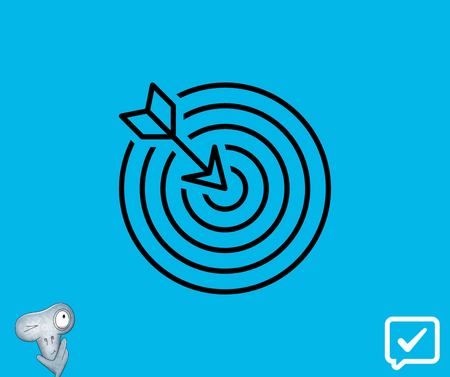
Every great invention was once an idea, but the path of transforming ideas into actual products is not a straight line. Once in a while, you’ll feel stuck and out of creative juices to ride trends and keep attention to your business.
Fortunately, we’ve prepared five ways you can generate new product ideas, and some do’s and don’ts to help you turn your vision into a reality.
1. Know Your Target Market
Identifying your target market will help you know their needs, motivations, and preferences. This enables you to determine who will buy your product or service. It also lets you know which of these products or services they’re willing to spend their money on.
Knowing your target market may generate a product idea specific to their demographics, such as age, gender, education level, and occupation.
Moreover, the Hinge Research Institute conducted a study on 1,293 firms which found that 42% reported experiencing revenue growth, while 49.2% conducted market research. They found a significant overlap between the percentages of firms that experienced revenue growth and those that conducted market research.

However, picking out your target market is not simply about knowing their demographics and assuming their needs. It requires thorough studying and a project management process.
You should ask questions such as, “What do they value?” “What is their lifestyle?” “What do they enjoy doing in their free time?”
Moreover, product validation through research ensures that the product idea you’re working on is something consumers will be willing to pay for. You can try psychographics, the psychological study of consumers based on their activities, interests, and opinions (AIOs).
2. Study Your Market and Competitors
Aside from studying your target market, you should also conduct market research. Sometimes knowing your target market alone may not be enough to generate an idea. It goes beyond understanding your customers.
Market research essentially combines economic trends and consumer behavior to improve your product or business idea further. By conducting this, you may consider the risks that lie ahead and prevent them.
Look at the things affecting a market. Factors like social, economic, technological, and political forces are the things you should consider.

You can do market research using existing resources. You can find online tools to help you assess and identify competitors and allow you to find new customers.
Competitive research involves studying your competitors. By evaluating your competitors, their products and services, and their strengths and weaknesses, you get these two main benefits that will help generate an idea.
- You will understand your market more. It will reveal trends that you might have missed in the market. It will also tell you why customers buy products from your competitor. You may improve your idea from this knowledge.
- You’ll be able to identify market gaps. Once you’ve analyzed your competitor’s strengths and weaknesses, you will find from the data that they have been targeting a specific set of customers and that a part of the population has been underserved.
This could help you generate a product or idea for the underserved population.
You may look at the competition in the market by simply visiting exhibitions, surfing the internet, and checking distributors in your area.
3. Brainstorm with Your Team
Sometimes the best way to generate an idea is to brainstorm and talk with your team. The right brainstorming will assist in problem-solving, stimulate creative thinking and develop new ideas within the group.
When brainstorming, lay all the ideas that will cross your mind. Don’t be scared of judgment, as criticism of ideas is put on hold for more productive brainstorming. New ways of thinking generated by new and fresh perspectives may offer unusual and unique ideas.

There are several brainstorming techniques you can try with your team. One of the most famous brainstorming techniques is the Round Robin Method. To do this, you should position your team in a circle and tell the group an issue you wish to address: in this case, a new product idea.
After this, the leader should go around the circle and have every member contribute an idea one at a time. The leader should also record and discuss these ideas after everyone has contributed.
Like the first part, ask each member how they feel about their teammates’ ideas or have them defend why they chose their concept. Try also to get a consensus within the group for each idea and have them rank it according to their most preferred concept.
Researchers have also found this method particularly useful in online and physical settings.
Alternatively, you may also brainstorm ideas alone. There is no risk of someone stepping on your creativity. You are free to develop concepts of any kind. However, it may be restrictive compared to brainstorming with your teammates.
4. Get Feedback from Other People
Gathering feedback is another excellent way to know which aspects of your previous products were liked or disliked by your customers. According to research, this also allows you to gear towards a more customer-centric approach, which boosts feedback diversity and gives you more information sources.
Creative thinkers can do more than generate an idea; they can evaluate and improve it. They may refine the idea if they see a loophole that would benefit them.
You may get feedback from people outside your team to increase your idea-generation process. You can involve your family, peers, and even the academic community to help you improve your idea or even get a new product idea.
You may also gather feedback from your target market. This may be easier for you to use online platforms for surveys. Using plug-ins, you can set up short surveys with one or more questions directly within your website. This is particularly useful if you already have many active users visiting your website regularly.

Alternatively, you can also send emails and customer contact forms to directly solicit your customers’ opinions on your services or products. Ensure you explicitly tell them how valuable their feedback is to encourage them better. You should also send personalized responses, such as follow-ups and bonus discount codes for their participation.
You can also gather feedback by looking at your website or social media accounts’ analytics. Usually, these platforms can present merchant accounts with a clear report on how many engagements their accounts have received.
You can also look at your website’s heat map to see which parts are more noticed by your visitors. Do your customers see relevant content? Which buttons or elements should you reposition for better engagement?
5. Innovate from Unused and Existing Ideas
Some best ideas are the results of improving existing ones. For example, Ericsson Mobile invented Bluetooth in the late 1980s, but it was only in 2015 that tech companies first made truly wireless earphones.
There are many unfinished concepts, some of them from you and others you can learn from developers. You may generate an idea from your unused idea combined with an existing one.
To improve an existing or unused idea, try to see what it lacks or what made you set it aside in the first place. Was it a lack of funding? Did you have no one to test it on? Was the technology back then incapable of bringing your idea to life? You have to answer these questions and see if they remain today. If they don’t, let’s proceed with the next step.

Now that you’ll no longer encounter the problems you did when you first thought of the idea, ask yourself whether the same concept can stand on its own or whether you should furnish it further.
For example, the Covid-19 pandemic brought heightened attention to sanitation, so you might think an attachable doorknob sprayer with alcohol is excellent.
However, you should also consider how technologies such as automation, WiFi, and Bluetooth connection can improve it further. Wouldn’t an automatic doorknob sprayer be better for sanitation since you won’t have to touch the spray to sanitize your doorknob?
Learn the Do’s and Don’ts
Here are some brief do’s and don’ts to give you a more concise glimpse of what you should and shouldn’t do when generating product ideas.
Don’t:
- Dismiss your idea just because it’s scary. Face your fear, as others would say.
- Limit yourself to a specific time when brainstorming. Always be open to ideas since they usually come when you least expect them.
- Do things without studying them. Research is essential since it will help you further analyze and understand your target market, your competitors, and market trends.
Do:
- Be Open to Ideas 24/7. You may carry a notebook to write your sudden ideas if you can. Ideas can leave as quickly and randomly as they come, so it’s essential to record them for future use.
- Collaborate With Others. People make up the product, and they also benefit from the product. Listening to other people’s ideas and opinions will give you more insights into something that you’re developing.
- Set a Deadline. You can’t go on generating product ideas for the rest of your life. You will have to sit and think through your thoughts and choose what you want to make into reality.
Although productive procrastination is a thing, you shouldn’t make it a habit, especially when stakeholders are involved.
- Protect your Business Idea. Once you are confident with your product idea, you may want to protect it from thieves. To do so, you may sign legal agreements such as a non-disclosure agreement (NDA), non-compete agreement, non-solicitation agreement, and work-to-hire agreement with the help of a legal counsel.
You may also want to register protection (copyright, patent, and trademarks) with the state office. This will allow legal interference in case of infringement.
Final Thoughts
Generating a product idea may be challenging, especially when you’re busy and don’t know where to start. However, with the right mindset combined with what you’ve learned from this article, you’ll undoubtedly bring an excellent product idea to life.
Also, remember that generating a product doesn’t have to be done independently. After all, the best ideas come from solid teams who understand that the products and services they offer benefit their customers before the company.
Author: Mike Abelson





Leave a Reply